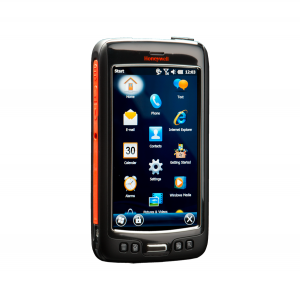
This ruggedized mobile unit operates on either Android or Windows operating systems, can collect data from a PDF bar code and capture an image or signature using a built-in 2D imager.
In previous blogs we talked about the transition from a manual ticket-writing process to an automated (e-citation) process and the huge time and money savings that occurs when this task is automated. We also touched briefly on the devices in the patrol car that are used to collect data. I think it’s worth spending a little more time discussing the hardware devices used in Law Enforcement (patrol cars in particular), what might be needed and why we think these devices are better than your average consumer device (like a cell phone or iPad).
In some states, police departments have implemented solutions that use smartphones capable of accessing their RMS (Record Management System). With a device like a smartphone, Officers are able to actually view information about a specific person, neighborhood, etc. to provide details that may be helpful to them while on the beat. In Law Enforcement, and public safety in general, knowledge is power. As far as I’m concerned, the more Officers know about the people and places in my community, the better informed they are and the safer I will be.
So what ARE your hardware options? Well, first you’ll need something like a mobile computing device that will allow you to access the internet, GPS and your RMS. You’ll also want to have a device that can fit in your pocket (comfortably!) and if you’re really serious about automation, you’ll get one that was specifically designed to read the PDF417 bar code on the back of a driver’s license or state issued identification card. Durability is also important – having a device that can survive multiple drops to concrete and a screen that resists scratches will keep your device working as expected.
At L-Tron we partner with best of breed manufacturers who are leaders in imaging technology. These companies have designed products for companies like FedEx, UPS and Wal-Mart so they “get” the importance of durability and reliability in a fast-paced environment. For example, Honeywell’s Dolphin™ 70e Black Smartphone is the new kid on the block and it’s impressive. It weighs about 7 ounces, was designed with a super-thin, pocketable form factor and is tougher than a commercial-grade phone. This rugged smartphone has an IP rating of 67 (waterproof), Gorilla-glass display and works well in cold weather. The styling of this device meets the consumerization device trends of today, with features and functions that work well in harsh environments. This ruggedized mobile unit operates on either Android or Windows operating systems, can collect data from a PDF bar code and capture an image or signature using a built-in 2D imager. For more info, check out our product review video.
OK, so now that I’ve told you all about the hardware, how are you going to collect and analyze the data? Connecting hardware with a software application will deliver information to the device. The application enables Law Enforcement and other public sector agencies to culminate mass amounts of data and utilize it to make officers on patrol more independent and empowered. It allows Officers on patrol to access critical information as well as to more easily share data with neighboring precincts and other government agencies. There are a lot of options out there, so we’ll talk more about this in a future blog!
Looking for expert advice on the right technology for your agency? Contact L-Tron Corporation at 800-830-9523 and we’ll provide a comprehensive, end-to-end plan to help you put together a technology refresh based on your current needs and budget requirements.













